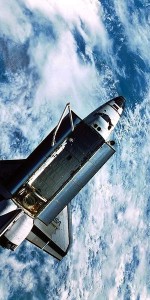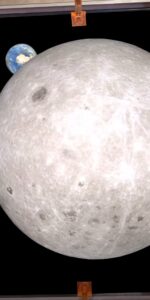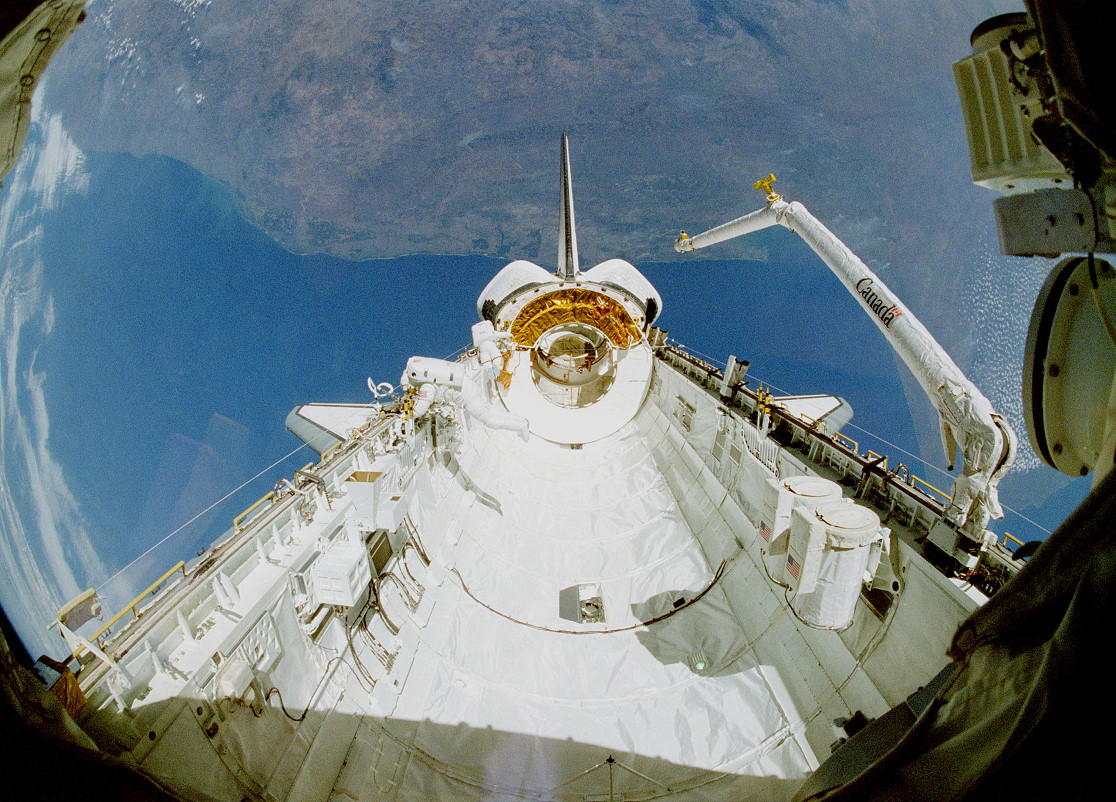
In the entirety of its 30-year operational career, none of the voyages of the space shuttle could be truly described as “ordinary” and certainly not “routine.” Thirty years ago this week, five men launched into orbit aboard Discovery on one of the most extraordinary flights in history.
The extraordinary nature of their flight began before they even lifted off, when they fell victim to a harrowing pad abort. During their ten days in space, Commander Frank Culbertson, Pilot Bill Readdy and Mission Specialists Jim Newman, Dan Bursch and Carl Walz launched an advanced NASA communications satellite, deployed and retrieved an ultraviolet observatory, performed an ambitious spacewalk, and executed the first night-time landing of the shuttle era at the Kennedy Space Center (KSC).
Launched on 12 September 1993, Culbertson’s crew completed their first major objective about 9.5 hours into the mission, by deploying the Advanced Communications Technology Satellite (ACTS), as described in yesterday’s AmericaSpace article. Their second payload was the German-built Shuttle Pallet Satellite (SPAS), which had flown on two previous missions, but which was being carried for the first time in its new “ASTRO-SPAS” configuration.
Unlike its first-generation predecessor, ASTRO-SPAS had the capability to remain in autonomous free-flight for up to ten days, commanded by the mobile German SPAS Payload Operations Centre (SPOC). The power for the satellite and its payloads came from a new lithium-sulphate battery pack, and precise attitude-control was provided by a three-axis-stabilised cold-gas system, a star tracker, and a space-borne global-positioning system (GPS) receiver.
The satellite’s precise attitude-control capabilities enabled it to support sensitive astronomical and Earth-observation sensors, with several missions planned. Two of these would carry a set of infrared telescopes and spectrometers to examine the upper atmosphere, one was scheduled (but never flown) to demonstrate advanced automated rendezvous and capture technologies in support of Space Station Freedom, and two others—including the ASTRO-SPAS aboard STS-51—carried the Orbiting and Retrievable Far and Extreme Ultraviolet Spectrometer (ORFEUS).
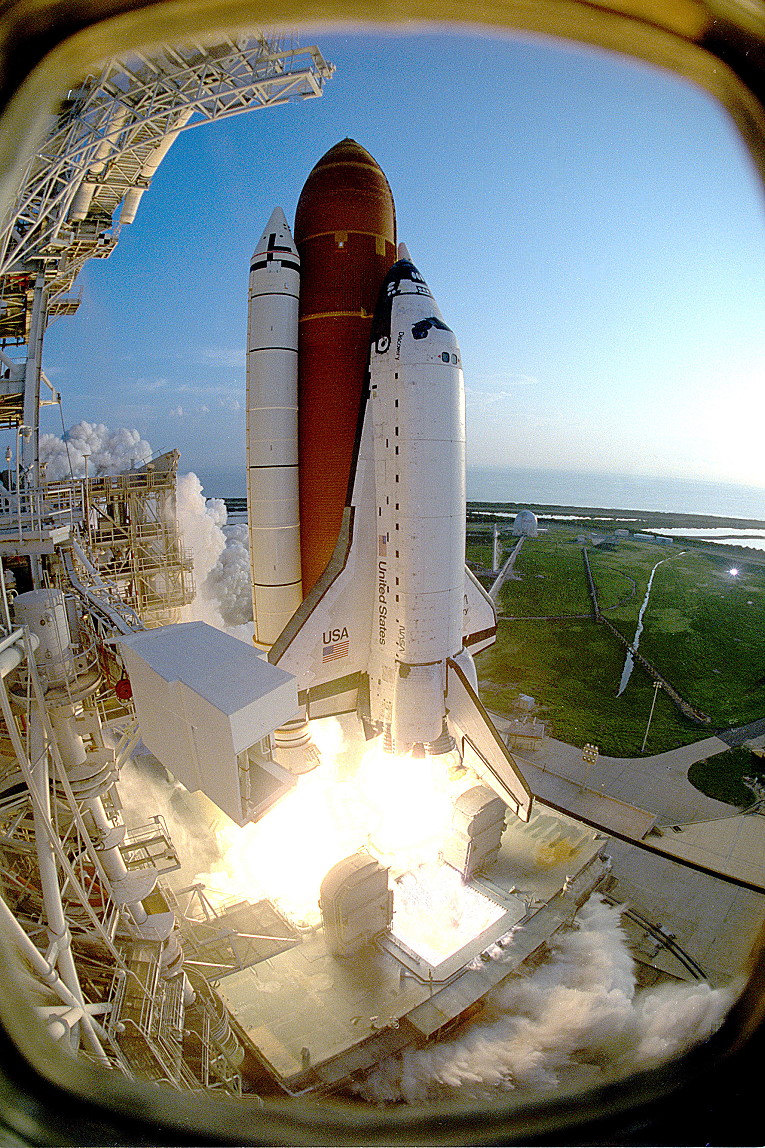
This instrument, with a large telescope, was designed to investigate very hot and very cold matter in the universe, combined with an Interstellar Medium Absorption Profile Spectrograph (IMAPS). Also affixed to the ASTRO-SPAS framework was a surface effects sample monitor to evaluate several future telescope material samples and a remote IMAX camera.
Of these, ORFEUS was by far the largest instrument. It was to observe the far and extreme ultraviolet, a region of the electromagnetic spectrum obscured from ground-based astronomers by the atmosphere. ORFEUS was expected to add a great deal to scientific understanding of the life-cycles of celestial objects by studying hot stellar atmospheres and white dwarfs, together with supernova remnants, active galactic nuclei, and star-forming clouds of gas and dust.
Operating alongside the telescope, IMAPS continued an earlier series of experiments aboard high-altitude sounding rockets to observe galactic objects and examine the fine structure of interstellar gas lines. During orbital operations, ORFEUS’ two spectrometers—far and extreme—were operated alternately, by “flipping” a mirror into the beam reflected off the instrument’s primary mirror.
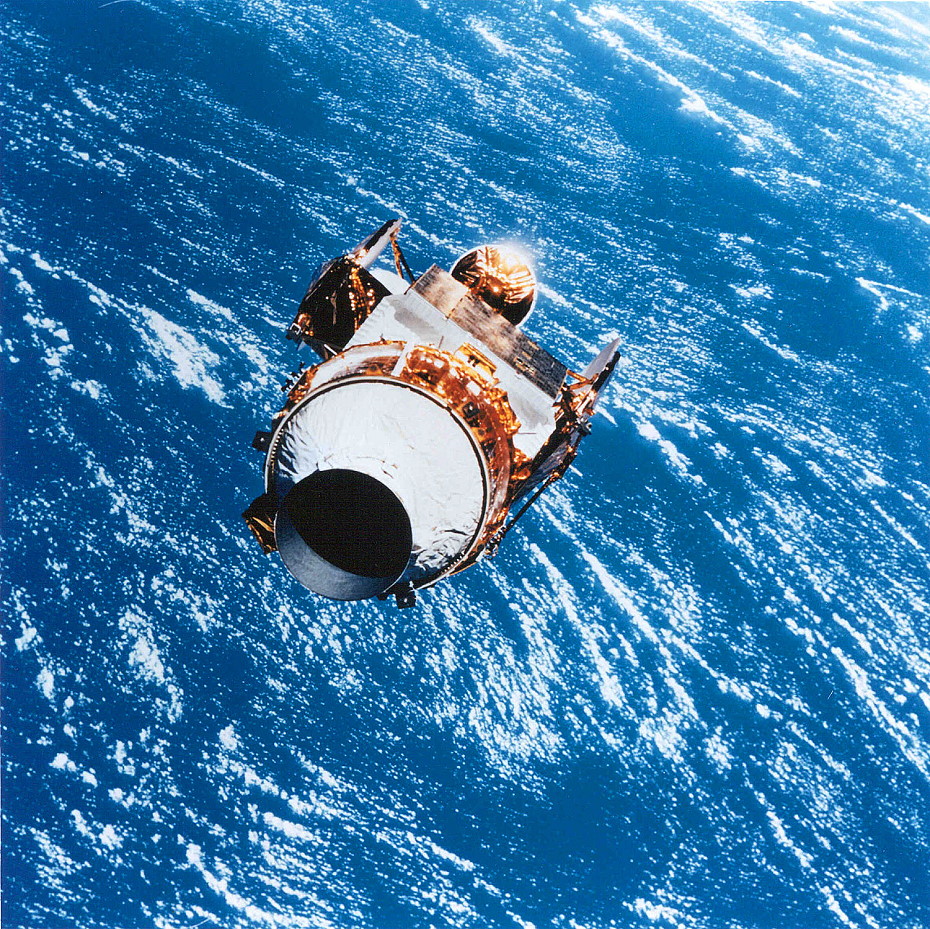
Deployment required Bursch to operate Discovery’s Remote Manipulator System (RMS) mechanical arm, whilst Newman monitored the health of the ORFEUS-SPAS systems from the aft flight deck. After powering up the payload, command and data links were established and the SPOC guided ORFEUS-SPAS through a lengthy pre-deployment checkout.
Its gyros were calibrated whilst still berthed, its data tape recorder was reset and Bursch prepared to raise the satellite above the payload bay. Preparations were slightly hampered by problems transmitting command files, which forced a one-orbit delay.
When all was ready, Bursch released ORFEUS-SPAS from the arm at 11:05 a.m. EDT on 13 September, a little more than a day into the mission, and the satellite drifted into the inky blackness. Culbertson performed a separation manoeuvre to draw the shuttle to a distance of about 12 miles “ahead” of ORFEUS-SPAS.
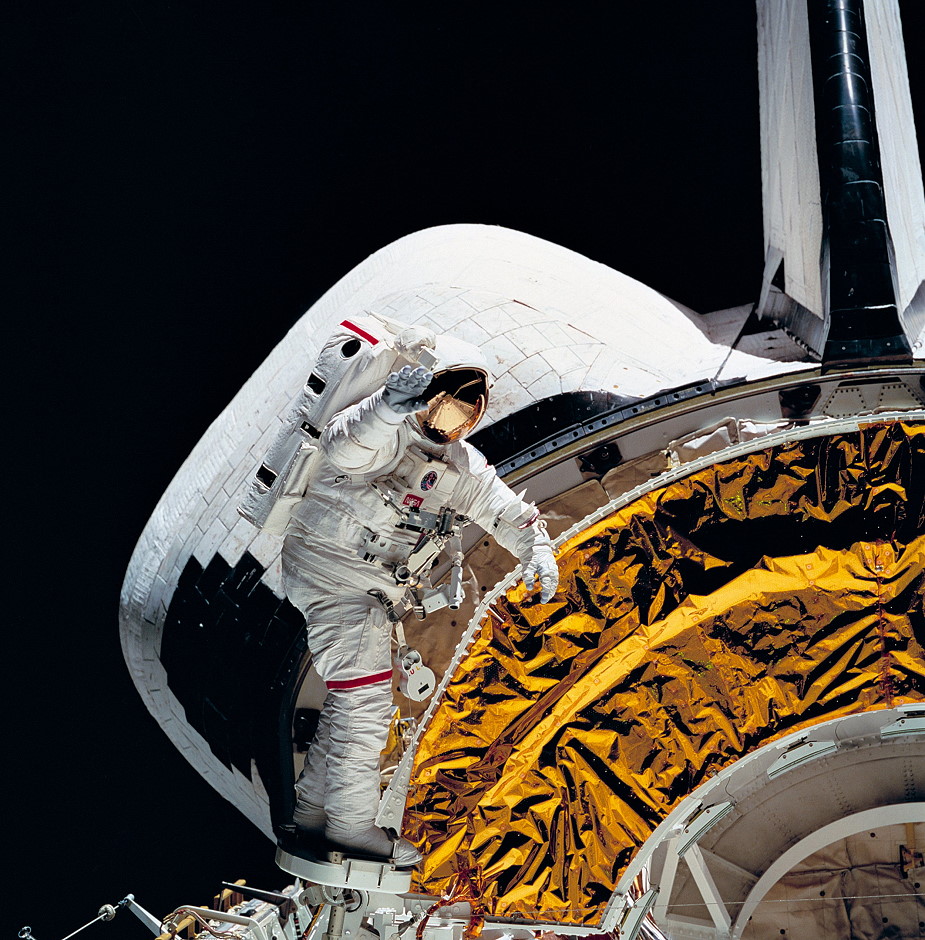
Under SPOC control, the satellite performed an inertial “attitude hold,” then a second gyro calibration, and the IMAX camera began recording spectacular images of the departing Discovery. For the next six days—far longer than earlier SPAS missions—the payload remained in free flight, with the shuttle acting as a relay station to transmit ground commands from SPOC controllers to the satellite and vice versa.
At length, on 19 September, the final maneuvers to recapture ORFEUS-SPAS got underway and with Discovery in position about 30 miles (50 kilometers) “behind” its quarry. Closing at an approximate rate of around nine miles (15 kilometers) per orbit, Culbertson executed four mid-course correction burns and finally took manual control of the orbiter for the final moments of the rendezvous.
Meanwhile, an automatic laser range-finder in the payload bay and a second, hand-held, device, operated by Readdy, provided data on distances and rates of closure. Finally, at 9:49 a.m. EDT, Bursch grappled the satellite with the RMS arm. The first flight of ORFEUS-SPAS had achieved more than 100 percent of its pre-launch scientific objectives.
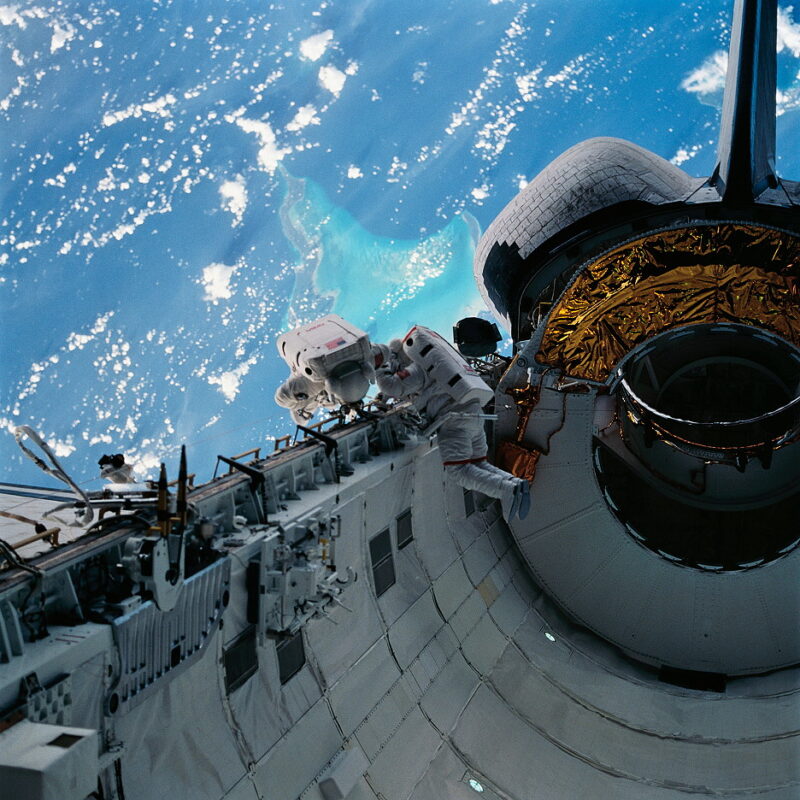
Between the deployment and retrieval of ORFEUS-SPAS, a six-hour spacewalk to build up NASA’s Extravehicular Activity (EVA) experience base in readiness for the construction of Space Station Freedom was conducted on 16 September by Walz and Newman. One of its primary goals was to “evaluate several tools that may be used during the servicing of the Hubble Space Telescope,” including “a power socket wrench, a torque wrench, foot restraints, safety tethers, and tool holders.”
Although the RMS arm was aboard, it was not to be used as part of the EVA trials, since it was committed to the ORFEUS-SPAS retrieval.
Preparatory work began on the second day of the mission, when the cabin pressure was reduced to permit “pre-breathing” protocols and Walz and Newman commenced standard checks of their space suits and tools. Early on the 16th, they donned the suits and underwent leak checks, a nitrogen purge and—a little earlier than intended—started their 40-minute period of pre-breathing.

The airlock hatch into Discovery’s payload bay opened at 4:39 a.m. EDT, and the spacewalkers proceeded directly into their EVA timeline, with Walz examining debris from the Super*Zip malfunction, described in yesterday’s article. He verified Mission Control’s consensus that the debris appeared sufficiently stable for landing, since it was securely held down in two places, and it was considered more prudent to leave it alone, rather than risk damaging their space suits from contact with sharp metal edges.
Working through their tasks, Walz and Newman—who were both first-time astronauts, as well as first-time spacewalkers—found that operating in the microgravity environment, suited, was far easier than it had been in the Weightless Environment Training Facility (WETF) water tank at the Johnson Space Center (JSC) in Houston, Texas. An attempt to use the power tool in a high-torque evaluation was slightly delayed by a low-battery warning, which prompted Newman to return to the airlock for a spare, and the men opined that the mini work stations on the RMS offered “very little restraint for the torque operations.”
Later, Newman evaluated a portable foot restraint for the Hubble Space Telescope (HST) servicing mission and found that it was much harder to egress the device than it had been in ground simulations. The astronauts returned to the airlock after seven hours and five minutes outside. In their post-flight debriefing, Walz and Newman stressed the importance of thermal vacuum chamber tests as part of EVA training.
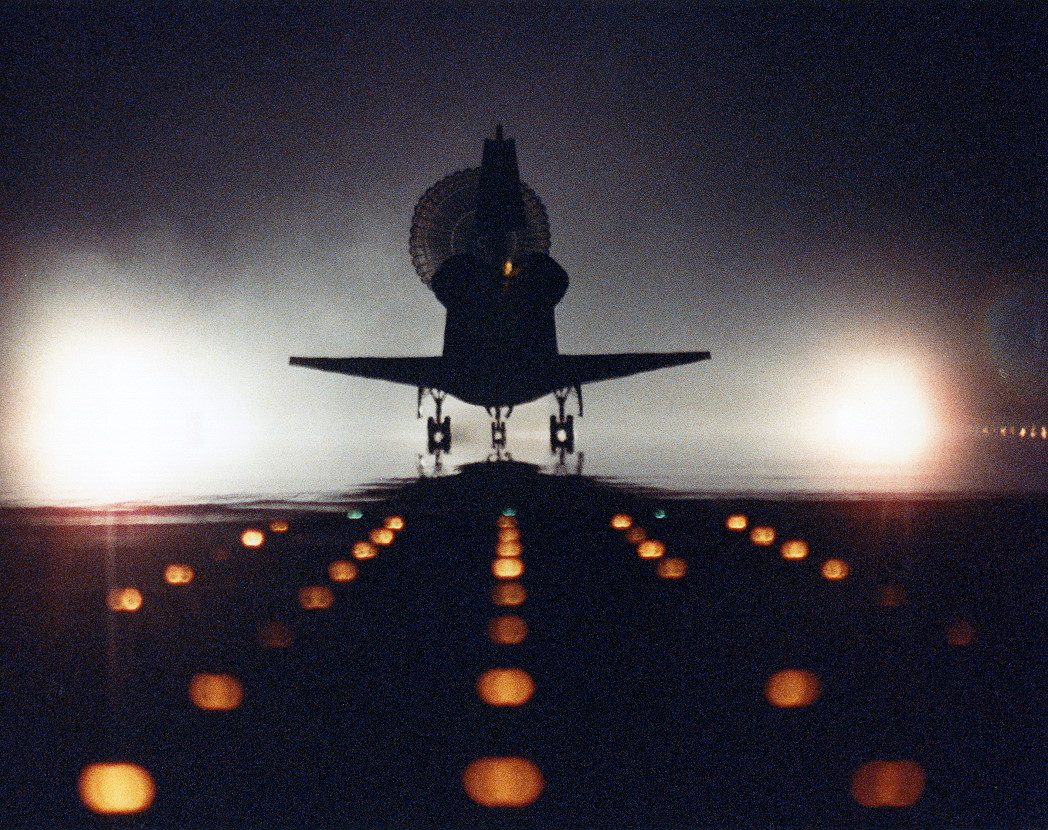
Discovery’s landing at the Kennedy Space Center (KSC) was planned for the morning of 21 September, but postponed due to unacceptable weather forecasts in the vicinity of the Shuttle Landing Facility (SLF) runway. Both opportunities for that day were called off, but 22 September proved more acceptable and Culbertson and Readdy performed the deorbit burn at 2:55 a.m. EDT, committing Discovery to its hour-long hypersonic glide home.
The orbiter landed safely on Runway 15 at 3:56 a.m. and enjoyed a smooth drag chute deployment and rollout, punctuated by an earlier-than-intended Auxiliary Power Unit (APU) shutdown when burning plumes were observed from the port-side exhaust ducts. Although seen on previous missions and not deemed abnormal, the plumes appeared more dramatic since Discovery landed at night. After more than two months of delays, the shuttle fleet was back in action.
In many ways, the accomplishments of STS-51—multiple satellite deployments, coupled with the intricacies of orbital rendezvous and station-keeping, spacewalking, scientific experiments, and nocturnal launches or landings—continued to lay the groundwork for the requirements of many shuttle missions in the following years. Many of the tasks completed by Frank Culbertson and his crew would prove important in a very pivotal sense as NASA proceeded into the shuttle-Mir effort and began moving toward the construction and on-orbit maintenance of today’s International Space Station.




